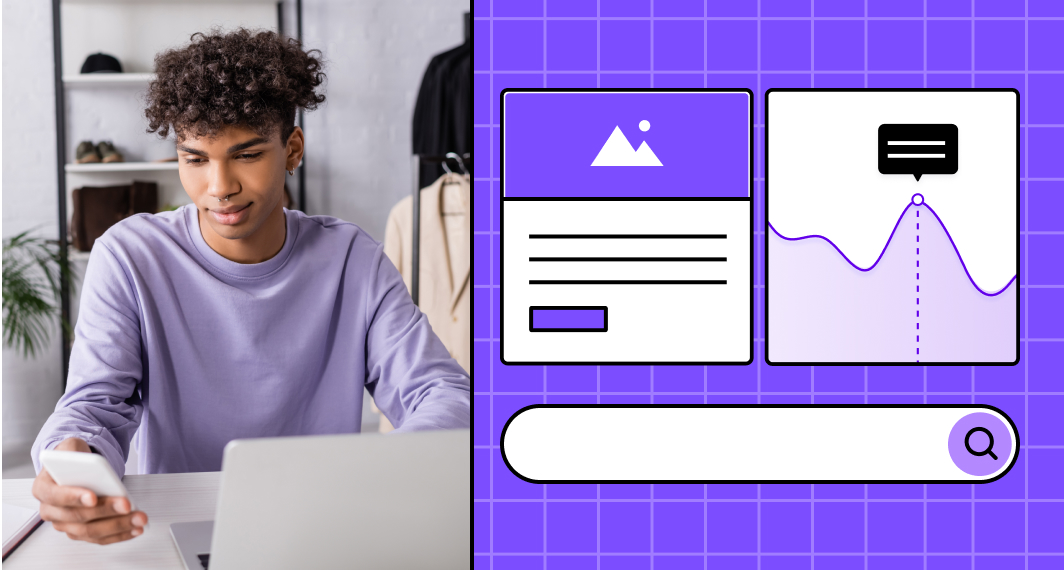What are assets in business?
Business assets are resources owned or controlled by a company that hold economic value and contribute to its operations and future earnings. These assets can include physical possessions (like equipment or property) as well as intellectual property, brand reputation and financial investments.
And all of these arevaluable resources for any organisation, powering growth, generating profits, and securing a competitive edge.
Business assets can mainly be divided into tangible or intangible assets,but also into current and non-current when examining their ease of convertibility to liquid cash.
What are the two main types of assets?
- Physical or tangible assets form solid foundations
Tangible assets are thephysical presence of a business that you can touch, see or feel.
These assets include office buildings, land, machinery, equipment, inventory and even websites and apps. Just as a sturdy foundation supports a building structure, tangible assets provide the backbone for your business operations.
Let's imagine you're opening a bakery.Your tangible assets would include:
- Your welcoming storefront
- Your app and website that digitally reflects your bakery brand
- The gleaming ovens, the very appealing display cases
- Most importantly, the mouthwatering treats stocked in your pantry
These tangible assets not only make your bakery visually appealing but also enable you to deliver delicious treats to your customers. Without them, your bakery would be nothing more than a recipe without ingredients.
- Non-physical or Intangible assets are unseen but extremely valuable
While tangible assets form the physical existence of your business, intangible assets are the untouchable superpowers that set you apart from the competition.
Think of them as the secret recipes handed down through generations that make your business stand out!
Intellectual property, such as patents, trademarks, copyrights and trade secrets, represent some of the most valuable intangible assets.
They protect your unique ideas, inventions, logos and branding elements. They are like the invisible cloak that protects your business from copycats and imitators.
But intangible assets don't stop there!
Your brand reputation, customer loyalty, and employee expertise also fall under this category.
These intangibles are the crew members who sail your ship through rough waters, helping you weather storms and reach new horizons.
What is asset convertibility?
Asset convertibility determines how quickly and easily an asset can be sold or converted into cash.
Assets with high convertibility can be easily sold or used to generate cash, providing flexibility and financial stability for businesses.
On the other hand, assets with low convertibility may require more time, effort or specific market conditions to be turned into cash.
Types of convertible assets
Current assets
These assets can quickly be converted into cash within a year or operating cycle.
- Think of cash and cash equivalents as actual cash, treasury bills, and certificates of deposits
- Marketable securities, like a stock exchange, are tradable investments that bridge long-term investments and immediate cash needs
- Accounts receivable represent outstanding debts from credit sales, waiting to be collected and transformed into cash
- Lastly, inventory can also be sold for cash flow
Non-current assets (assets over time)
These are long-term assets that hold a lot of future benefit and economic potential.
- Property, plant and equipment (PP&E) form the backbone of your business—facilities, land, machinery, and equipment
- Intangible assets also pay for themselves in time. They include patents, copyrights, trademarks and goodwill
- Investments, such as stocks or bonds, may require more time and market conditions for convertibility, but they hold potential for fruitful returns
How to manage (and maximise) your assets
Now that we've understood business assets, it's time to discuss how to manage and maximise their potential. To do so effectively, you must protect, maintain and utilise your assets strategically.
Asset management involves tracking and evaluating the value, performance, and risks associated with each asset. Doing this leads you to make informed decisions about purchasing, maintaining, and disposing of assets.
Additionally, asset management helps identify underutilised or obsolete assets that can be replaced or divested to optimise your resources.
To maximise the return on your assets, consider these strategies:
- Enhance tangible assetswith regular maintenance, upgrades and renovations to extend the lifespan and improve the performance of your physical assets. A bakery, for example, could invest in state-of-the-art ovens or remodel the interior to create an inviting atmosphere
- Leverage Intangible Assetsto strengthen your intellectual property by registering trademarks, patents, and copyrights. Invest in marketing campaigns to build brand awareness and loyalty. Train your employees to become experts in their fields, enhancing their knowledge and skills.
- Strengthen current assets by optimising cash flow through techniques like cash flow forecasting, efficient inventory and receivables management. This ensures sufficient liquidity, reduces holding costs and accelerates the collection of outstanding receivables.
- For non-current assets, effective management revolves around strategic planning throughout their lifecycle. This includes comprehensive planning, accurate valuation, and strategic disposal or replacement. Maximising asset utilisation through preventive maintenance and performance monitoring enhances productivity and operational efficiency.
Ultimately, tangible and intangible assets work hand in hand, providing the necessary foundations to make your business thrive at any stage with the convertibility of current and noncurrent assets playing a supporting role.
By managing and maximising the four kinds of assets, you can unlock their full potential and gain a massive competitive edge.
Get a free app prototype now!
Bring your software to life in under 10 mins. Zero commitments.


 Facebook
Facebook X
X LinkedIn
LinkedIn YouTube
YouTube Instagram
Instagram RSS
RSS


